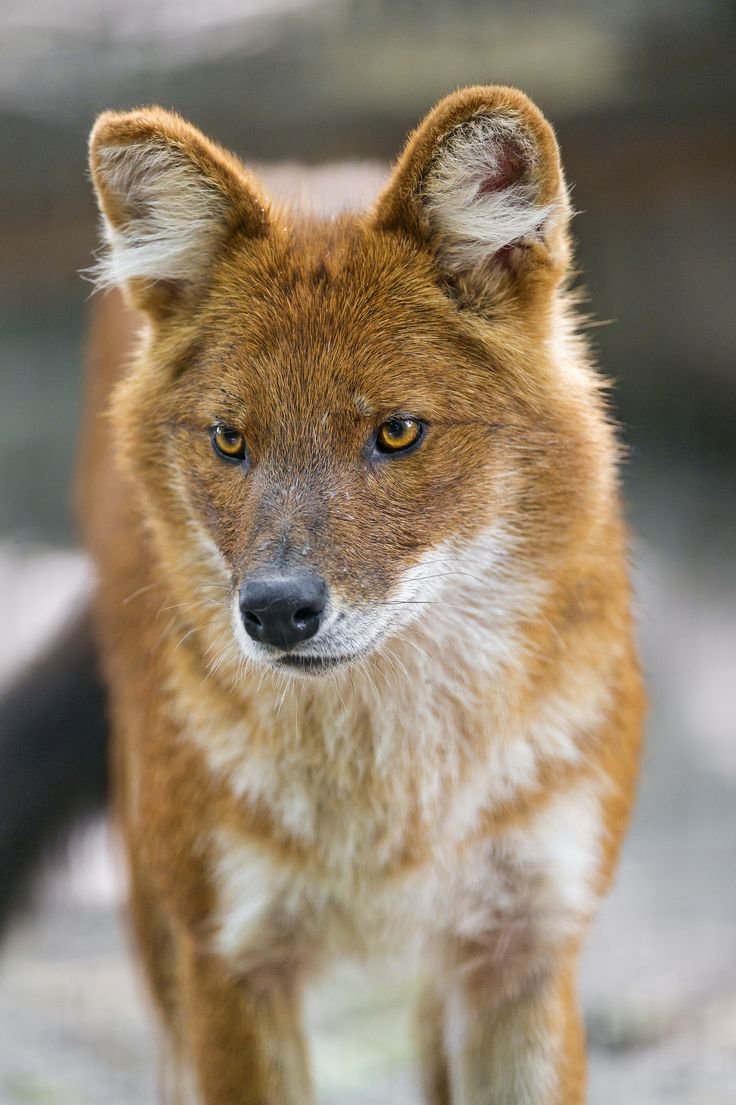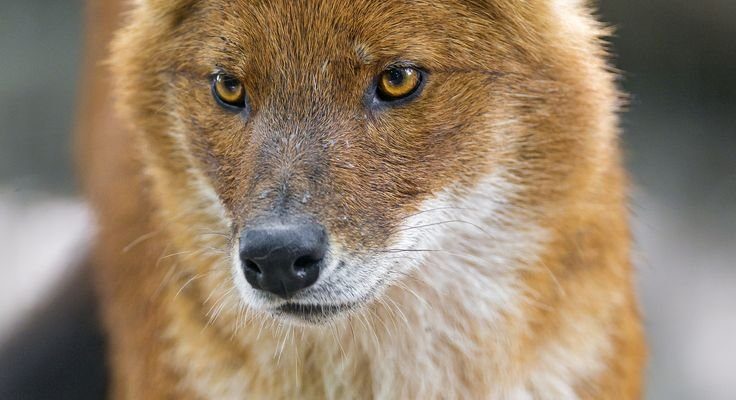
Imagine standing in a lush forest, surrounded by the sounds of nature, and spotting different animals darting through the underbrush. Some may have similar physical traits or behaviors as the dhole, but each has its own unique characteristics. In this article, we’ll explore ten animals that bear a resemblance to the dhole and provide tips on how to identify them. Grab a cup of coffee, and let’s dive into the wild world of canines and their close relatives.
1. African Wild Dog
The African wild dog is a distant cousin of the dhole and shares a similar pack-oriented lifestyle. Known for their large ears and mottled coat, these dogs are excellent hunters. Unlike the dhole, which has a more uniform rust color, African wild dogs boast a beautiful patchwork of brown, black, and tan fur.
You might find them in savannas and grasslands across Africa, where they use teamwork and clever strategies to hunt prey, such as antelope. One key difference is that African wild dogs have a more slender build and longer legs than dholes, giving them an edge when sprinting after dinner. So, if you’re ever in the African wilderness and see a group of lively dogs with large, rounded ears, you may just have spotted them.
2. Grey Wolf
The grey wolf is one of the most iconic canines, often depicted in tales and folklore. While they share some physical traits with the dhole, like a bushy tail and a pack mentality, grey wolves tend to be larger and have a more varied coat color, ranging from white to black.
These majestic animals are typically found in forests, mountains, and tundra regions, primarily in North America and Eurasia. One way to tell them apart is their howl—unlike the dhole’s higher-pitched vocalizations, the wolf’s howl is deeper and resonates across long distances. Plus, their face is more elongated, giving them a distinguished appearance. So next time you hear a haunting howl at night, remember that it might just be a grey wolf, not a dhole.
3. Coyote
If you’re in North America, you might encounter the coyote. These crafty canines are a bit smaller than dholes and sport a bushy tail with a black tip. Their coat is often a mix of gray, brown, and reddish hues, somewhat similar to the dhole’s appearance.
Coyotes are highly adaptable and can thrive in various habitats, from mountains to urban areas. One easy way to tell them apart from dholes is their call, which sounds more yappy and playful, while dholes have a more intense, alarmed bark. Coyotes are also more solitary and don’t exhibit the same strong pack dynamics as dholes, which rely heavily on teamwork for hunting. So, a lone howler you encounter in the wild is likely a coyote, not a dhole.
4. Jackal
Next up is the jackal, another member of the canine family. Jackals are smaller than dholes and have a more slender body. Their fur can vary from yellowish to black, and they often have a distinctive bushy tail and pointed ears.
These animals are known for their scavenging habits, often feeding on carrion, small mammals, and plants, unlike the dhole, which is more of a specialized hunter. Jackals also tend to be more vocal, communicating with a range of calls that sound quite different from the dhole’s vocalizations. If you see a small, agile creature darting through the underbrush with a sharp howl, it could likely be a jackal rather than a dhole.
5. Arctic Fox
The arctic fox isn’t a direct resemblance to the dhole, but they share some similarities in size and fur color. Arctic foxes are smaller and have thick, fluffy coats that change color with the seasons—white in winter and brown or gray in summer.
They’re wonderfully adapted to cold environments, living in polar regions across the northern hemisphere. Unlike the dhole, which has a more social structure, arctic foxes are generally solitary or live in small family groups. If you spot a small, fluffy creature darting across the snow, don’t assume it’s a dhole; it might just be an adorable arctic fox on a hunt for lemmings.
6. Dingo
The dingo, native to Australia, looks quite a bit like the dhole. In fact, they share a common ancestor! Dingoes are medium-sized canines with a lean body and a bushy tail. Their fur color ranges from light tan to reddish-brown, similar to the dhole.
These animals are highly adaptable and can live in various environments, from deserts to forests. However, they are more inclined to live alone or in smaller family units compared to the dhole’s larger packs. If you hear a unique, howling call in the night, don’t be surprised if it’s a dingo looking for companionship—or a dhole doing the same.
7. Australian Wild Dog
Similar to the dingo, the Australian wild dog is another fascinating relative. This canine is often confused with the dingo, but it can be slightly bulkier and has a broader face. Their fur usually sports shades of reddish-brown.
These wild dogs are known for their intelligence and adaptability in the harsh Australian landscape. Unlike the dhole, which hunts cooperatively in packs, Australian wild dogs often hunt alone or in pairs. If you come across a wild dog with a sturdy build and strikingly well-defined facial features, chances are it’s not a dhole but an Australian wild dog.
8. Red Fox
The red fox is one of the more familiar canines we might encounter. With its bushy tail, pointy ears, and vibrant red-oranges fur, it’s easy to see the resemblance. However, red foxes are generally smaller and have a narrower face compared to the dhole.
Red foxes are incredibly adaptable and can be found in diverse habitats, including forests, grasslands, and even urban areas. They’re primarily solitary animals and often hunt for small prey like rodents. If you spot a sleek fox with a white-tipped tail sneaking through the grass, you can bet it’s a red fox, not a dhole.
9. Bush Dog
The bush dog is an intriguing relative of the dhole. These lesser-known canines are smaller and stockier than dholes, with a shorter snout and webbed feet, making them excellent swimmers. Their fur is typically a dark brown or black, setting them apart from the dhole’s rust color.
Bush dogs are quite social and live in small packs, much like dholes. They inhabit dense forests and swamps in Central and South America, mainly hunting for small animals and fish. When comparing the two, look for the bush dog’s squat build and darker coat, which will signal that you’re in the presence of a different breed.
10. Domestic Dog
Finally, let’s not forget about the domestic dog. While they vary widely in size and appearance, some breeds closely resemble the dhole, particularly the more primitive breeds like the Basenji or Shikoku.
Domestic dogs are often more varied in color and size than dholes, and they have been bred for various purposes, from hunting to companionship. The social dynamics of domestic dogs can also differ significantly, as they often interact more closely with humans compared to the wild dhole pack. If you see a canine that seems friendly and playful, chances are it’s a domestic dog, not a dhole on the hunt.
In summary, while the dhole has its unique charm and characteristics, it shares the spotlight with many other fascinating animals in the canine family. Understanding these similarities and differences can enrich our appreciation for wildlife and the diverse roles each species plays in their ecosystem. Next time you’re out exploring, keep an eye out! You never know what canine might cross your path.

